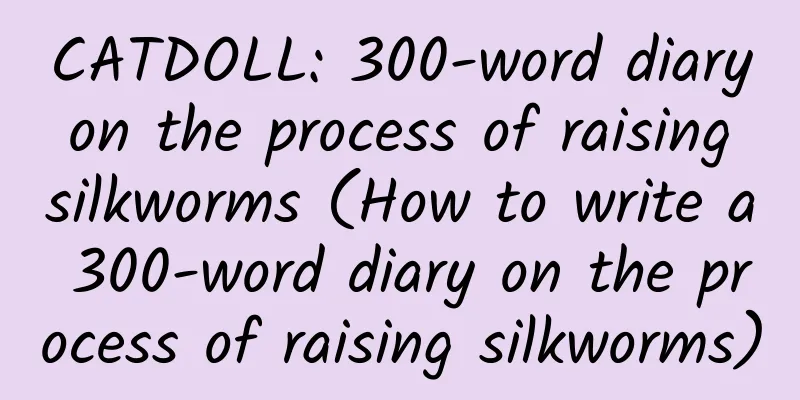CATDOLL : CATDOLL: The history of sericulture

History of SericulturePreparing silkworm seeds is an important part of silkworm production. As early as the Qin and Han Dynasties, people knew that appropriate high temperature and fullness are beneficial to the growth and development of silkworms and can shorten the age of silkworms. Therefore, all dynasties have paid great attention to the regulation of humidity and temperature in the silkworm breeding environment. According to the "Qimin Yaoshu", fires were set around the silkworm room to heat it up to regulate the temperature of the silkworm room. The "Shi Nong Biyong" of the Yuan Dynasty pointed out that when the silkworms are young, the silkworm room should be warmer because it is still cold at that time; and after the big sleep, it should be cooler because it is already hot. After long-term silkworm breeding practice, ancient silkworm farmers have also accumulated rich experience in preventing and controlling silkworm diseases. More than 2,000 years ago, the ancient Chinese already knew that the egg surface should be washed with clean water, and later it was further developed to use cinnabar solution, salt water, lime water and other drugs with disinfectant effects to dissolve and disinfect the egg surface. This is very important to prevent silkworm diseases. More than 1,400 years ago, the ancient Chinese had already paid attention to the selection of silkworm seeds. The Qi Min Yao Shu proposed to select the quality of the cocoons "in the middle of the cluster", the time and location of cocoon formation, the time when the moths emerged from the cocoons, the health of the moths, and the health of the eggs, etc., to select the seed cocoons, moths and eggs. In the Qing Dynasty, people paid more attention to the selection of silkworms. They knew that only "silkworms without diseases can breed without diseases". Through strict selection at all levels, a large number of weak and diseased silkworm seeds were eliminated, thereby improving the physical fitness of the second generation of silkworms, and at the same time, to a certain extent, it was also helpful to prevent the transmission of microparticle pathogens to offspring through embryos. In order to develop silk production, in ancient times, in addition to raising silkworms, summer silkworms, autumn silkworms, and even raising multiple batches of silkworms a year. "Yuancan" is recorded in "Zhou Li", and "Yuan" means "again". "Yuancan" refers to the silkworms that are raised for the second time in a year, that is, summer silkworms. According to "Yongjia County Records" by Zheng Ji of Liu Song, in the 4th century AD, eight batches of silkworms could be raised in Yongjia (now Wenzhou, Zhejiang) a year. Everyone knows that silkworms are divided into monovoltine, bivoltine, and polyvoltine. In tropical areas (such as Guangdong), polyvoltine silkworms can be used to raise multiple batches of silkworms by hatching naturally multiple times a year, or the eggs produced by bivoltine silkworms can be placed in an appropriate low temperature to accelerate greening, so that the eggs produced can continue to hatch within the same year. If the low temperature is maintained to accelerate greening, they can continue to hatch, and multiple batches of silkworms can be raised a year. This is indeed a remarkable invention. In the Ming Dynasty, hybrid vigor of silkworms was discovered during the production of summer silkworm seeds. Song Yingxing said in Tiangong Kaiwu (1637): "Nowadays, some people mate early males with late females, and they produce good seeds. This is a difference." The so-called "early males with late females" means that monovariant male silkworms and bivariant male and female silkworms are hybridized, and the result is "good seeds", that is, excellent silkworm seeds. This is the earliest record in the world on the use of hybrid vigor of silkworms. Where did silkworms come from? Where do people still raise silkworms now?Let me tell you, there are silkworms in Panzhihua, Sichuan, and some people are raising them. The quilt I cover myself with is not cotton wool, but a silk quilt. My mother made it for me herself. It is so comfortable. After I started using it, I never thought of using cotton wool again. There are silkworms in some rural areas of Sichuan. I have seen them being raised. I still have some, I have a lot, I'll give you a few. But I live in Guangdong. |
<<: CATDOLL: How to artificially hatch golden cicadas
>>: CATDOLL: What is the difference between a wasp and a beehive?
Recommend
CATDOLL: Do spiders recognize humans?
1. Why do spiders refuse to recognize their paren...
CATDOLL: Is farming snails profitable?
1. Is it profitable to breed snails? Snails need ...
CATDOLL: Go to the Hard North Temperate Zone
Go to the Hard North Temperate Zone Latitude: 66 ...
CATDOLL: Is the turtle a wild animal?
Is the turtle a wild animal? Soft-shell turtles a...
CATDOLL: What are the four major benefits of wide water fish farming technology for raising ornamental fish?
1. What are the four major benefits of wide water...
CATDOLL: How to prevent and treat turtle tail amputation?
1. How to prevent and control turtle tail breakag...
CATDOLL: How to survive the winter of goldfish spider plants? How to cultivate goldfish spider plants
1. Increase the temperature: Chlorophytum comosum...
What to do if you are allergic to cat hair?
How to deal with cat hair allergy: 1. Drug treatm...
CATDOLL: How much is 200 Peruvian coins equal to RMB?
How much is 200 Peruvian coins = RMB? However, th...
CATDOLL: What are the main diseases of giant salamanders? How to prevent and treat them?
1. What are the main diseases of giant salamander...
CATDOLL: Effects of overnutrition in pregnant sows and countermeasures
Importance of dietary management in pregnant sows...
CATDOLL: Can river carp, common carp and silver carp be raised together in the same pond?
These three types of fish can be raised in one po...
How long does a cat normally sleep?
Sleep is very important to us, and the same is tr...
CATDOLL: Which fish are special aquatic products? What types of aquatic fish are there?
1. Which fish are special aquatic products? Speci...
CATDOLL: Can yellow croaker be raised?
1. Can yellow croaker be raised? It's hard to...









